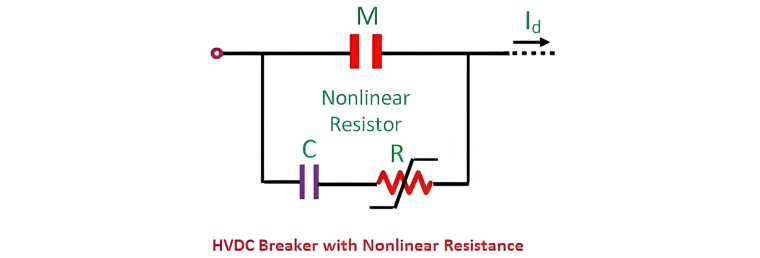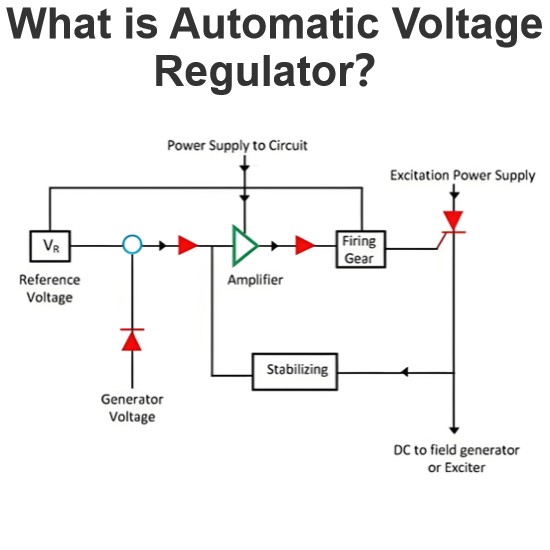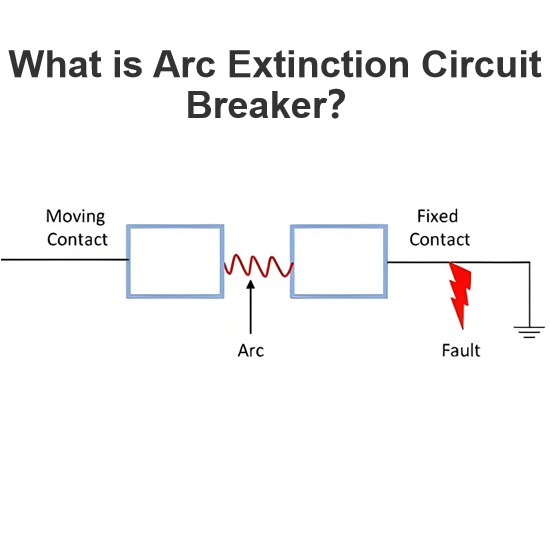HVDC Circuit Breaker
HVDC Circuit Breakers: Functionality, Challenges, and Solutions
An HVDC (High - Voltage Direct Current) circuit breaker is a specialized switching device designed to interrupt the flow of abnormal direct current within an electrical circuit. When a fault occurs in the system, the mechanical contacts of the circuit breaker separate, effectively opening the circuit. However, breaking the circuit in an HVDC system is a challenging task compared to its AC (Alternating Current) counterpart. This is primarily because the current in an HVDC circuit flows in a single direction and does not naturally pass through zero current values, which are crucial for arc extinction in AC circuit breakers.
The primary function of an HVDC circuit breaker is to interrupt high - voltage direct current flows in the power network. In contrast, AC circuit breakers can easily interrupt the arc when the current reaches its natural zero point in the AC waveform. At this zero - current instant, the energy that needs to be interrupted is also zero, allowing the contact gap to regain its dielectric strength and withstand the natural transient recovery voltage.
In HVDC circuit breakers, the situation is far more complex. Since the DC waveform lacks natural current zeros, forced arc interruption can lead to the generation of extremely high transient recovery voltages. Without proper arc interruption, there is a risk of restrikes, which can ultimately result in the destruction of the breaker contacts. When designing HVDC circuit breakers, engineers must address three key challenges:
Creation of Artificial Current Zero: This is essential for arc extinction as the absence of natural current zeros in DC makes it difficult to interrupt the arc.
Prevention of Restrike Arcs: Once the arc is interrupted, measures must be taken to prevent it from reigniting, which could cause damage to the breaker and disrupt the system.
Dissipation of Stored Energy: The energy stored in the system components needs to be safely dissipated to avoid potential hazards.
To overcome the lack of natural current zeros, HVDC circuit breakers employ the principle of creating artificial current zeros for arc extinction. One common approach involves introducing a parallel L - C (inductor - capacitor) circuit. When this circuit is activated, it causes the arc current to oscillate. These oscillations are intense and generate multiple artificial current zeros. The circuit breaker then extinguishes the arc at one of these artificial zero - current points. For this method to be effective, the crest current of the oscillation must exceed the direct current that needs to be interrupted.
A more detailed implementation involves connecting a series resonant circuit consisting of an inductor (L) and a capacitor (C) across the main contact (M) of a conventional DC circuit breaker via an auxiliary contact (S1). Additionally, a resistor (R) is connected through contact (S2). Under normal operating conditions, the main contact (M) and the charging contact (S2) remain closed. The capacitor (C) is charged to the line voltage through the high - resistance (R). Meanwhile, contact (S1) remains open, with the line voltage across it. This setup lays the foundation for creating the necessary conditions to interrupt the DC current during a fault scenario by generating artificial current zeros and managing the associated electrical processes.

When it comes to interrupting the main circuit current Id, the operating mechanism initiates a sequence of actions. First, it opens contact S2 and simultaneously closes contact S1. This configuration triggers the discharge of capacitor C through inductance L, main contact M, and auxiliary contact S1. As a result, an oscillatory current is established, as depicted in the figure below. This oscillatory current generates artificial current zeros, which are crucial for the proper operation of the circuit breaker. The main contact M of the circuit breaker is then opened precisely at one of these artificial current zero points. Once the main contact M has successfully interrupted the current, contact S1 is opened, and contact S2 is closed, resetting the system for potential future operations and ensuring the integrity of the HVDC circuit - breaking process.

Alternative Method for Interrupting Main Direct Current
An alternative approach to interrupting the main direct current in a high - voltage direct current (HVDC) system involves diverting the current to a capacitor, which effectively reduces the magnitude of the current that the circuit breakers need to interrupt. This method is illustrated in the figure below, and it starts with a capacitor C that is initially in an uncharged state.
When the main contact M of the circuit breaker begins to open, a crucial event occurs: the main circuit current, which was previously flowing through the main contact M, is redirected and starts to flow into the capacitor C. As a result of this redirection, the current load that the main contacts M have to handle during the interruption process is significantly diminished. This reduction in current magnitude eases the burden on the circuit breaker, making the interruption process more manageable and less likely to cause damage or failure.
In addition to the capacitor's role in diverting the current, a nonlinear resistor R is also an essential component of this system. The nonlinear resistor R plays a vital part in absorbing the energy associated with the current flow without causing a substantial increase in the voltage across the main contact M. By efficiently dissipating the energy, the nonlinear resistor helps to maintain the integrity of the circuit breaker and the overall electrical system, ensuring that the voltage levels remain within acceptable limits during the current interruption process. This coordinated operation of the capacitor C and the nonlinear resistor R provides an effective and reliable method for interrupting the main direct current in an HVDC system.

The rate of rising of the recovery voltage across M is expressed as

In DC circuit breakers that rely on oscillating currents to interrupt the flow, the challenge of preventing restrikes is particularly formidable. This is due to the extremely short duration in which the current is interrupted or "chopped." When the current is rapidly interrupted in such a short time frame, it generates a steep and sudden surge in the restriking voltage across the breaker terminals. This high - magnitude, rapidly rising voltage poses a significant threat to the circuit breaker's integrity. To ensure reliable operation, the circuit breaker must be engineered with sufficient dielectric strength and voltage - withstanding capabilities to endure this intense restriking voltage without succumbing to restrikes, which could lead to damage, electrical arcing, and system failures.
The Electricity Encyclopedia is dedicated to accelerating the dissemination and application of electricity knowledge and adding impetus to the development and innovation of the electricity industry.













